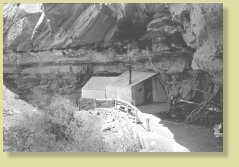 |
Robbins-Mills Collection of Herbert Wendell Gleason Photographic Negatives, 1899-1937 Concord Free Public Library — Special Collections |
Series XIV – National Parks, 1905-1926
 Series XIV (316 glass, 501 film) is organized into ten subseries. Subseries are arranged by park name in alphabetical order, and by date. Parks include: Bryce Canyon National Park and Zion Canyon National Park, Denali National Park & Preserve, Glacier National Park, Grand Canyon National Park, Mesa Verde National Park, Mount Rainier National Park, Rocky Mountain National Park, Sequoia & Kings River Canyon National Park, Yellowstone National Park and Grand Teton National Park, and Yosemite National Park. Zion Canyon is listed as a subseries of Bryce Canyon based on geographical proximity. Sequoia & Kings River Canyon are managed as one park by the National Park Service. Gleason labeled the Grand Teton images as part of Yellowstone Park.
Series XIV (316 glass, 501 film) is organized into ten subseries. Subseries are arranged by park name in alphabetical order, and by date. Parks include: Bryce Canyon National Park and Zion Canyon National Park, Denali National Park & Preserve, Glacier National Park, Grand Canyon National Park, Mesa Verde National Park, Mount Rainier National Park, Rocky Mountain National Park, Sequoia & Kings River Canyon National Park, Yellowstone National Park and Grand Teton National Park, and Yosemite National Park. Zion Canyon is listed as a subseries of Bryce Canyon based on geographical proximity. Sequoia & Kings River Canyon are managed as one park by the National Park Service. Gleason labeled the Grand Teton images as part of Yellowstone Park.
The series includes many panoramic views of cliff and canyon, towering mountains, high plateaus, and unusual geological features including stone arches (Zion's Kolob Arch, the world's largest arch), geysers (Yellowstone's Old Faithful), "hoodoos" (fantastic rock formations found in Bryce Canyon) and hot springs. Other landscape features include: buttes, glaciers, gorges, lakes, rivers, seracs, steep trails, and cascading waterfalls. Gleason photographed subalpine flowers (polemonium elegans, erythronium, phlox diffusa, mertensia panicualta, dodecatheon crenatum, and avalanche lilies), plants (mescal, mistletoe, sagebrush, tumbleweed, and yucca), and trees including lodgepole pine, piñon pine, and sequoia. Natural phenomena include alpenglow (a reddish glow seen near sunset or sunrise on mountain summits), cloud effects, mists rising, and thunder clouds. Animals include bears, chipmunks, deer, and pack mules.
Hotels include Glacier Park Hotel, Mammoth Springs Hotel (Yellowstone), Old Faithful Inn (Yellowstone), and Paradise Inn (Mt. Rainier). Portraits of individuals include Mr. & Mrs. Emerson, J.B. Fett, Desmond Fitzgerald, E.W. Hamden, Stephen T. Mather (first director of the National Park Service and Gleason's friend), Frederick Law Olmsted II, Mr. D.S. Spencer, Mr. Reeves, Harold Russell, Jack Scheidell, and R.C. Syrett (he ran the first tourist facilities at Bryce Canyon). Gleason appears in photographs at Echo Canyon, Zion National Park, and on the Hermit Trail at Grand Canyon National Park. Of interest is Gleason's image of "Louis Boucher's Dripping Springs Camp, July 5, 1907" (XIV.D.1907.12). Gleason's tripod and other camera equipment can be seen in the photograph resting on the table.
Gleason accompanied the Sierra Club's expedition to Mt. Rainier in 1905. Included in the Sierra Club scenes is a dramatic image of a single file of climbers making their way up Mt. Rainier (XIV.F.1905.68). Mt. Rainier is the most heavily glaciated peak in the contiguous U.S., and Gleason photographed many of its glaciers including Carbon Glacier, Cowlitz Glacier, Emmons Glacier, Grinnell Glacier, Inter Glacier, and Nisqually Glacier. Copies from other works include images of Mt. Rainier photographed by Asahel Curtis.
Gleason's Yellowstone images taken in 1921 helped defeat legislation that would have allowed reclamation projects in the national park. Gleason's photograph of Bubb Creek Falls in Yellowstone was used in the National Park Service 1919 Annual Report. Twenty-nine images were published in Crossette's The Western Wilderness of North America (1972).